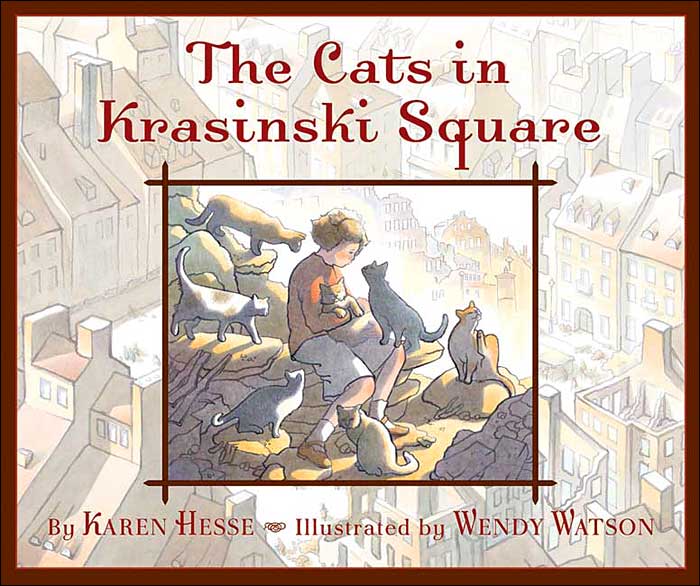
Hesse, Karen. 2004. THE CATS IN KRASINSKI SQUARE. Ill. by Wendy Watson. New York: Scholastic Press.
*Plot Summary
A young girl, with the help of many cats left behind by Jews in Nazi occupied Poland, distracts the Gestapo and gets food behind the wall of the Ghetto.
*Impressions
The narrator is a young girl who loves cats and cares for her friend behind the wall. The portrayal of the girl is realistic and sympathetic. The cats in the story also play an important role because they represent the families who were no longer living free in Warsaw. Although the situation in the book is a complicated one, Hesse explains the plot with simple details and basic facts. These details help readers understand the seriousness of the time in history; the problem in the story is authentic. The time and place of the story are established successfully without overwhelming readers with too much information. Similarly, the illustrations are simple but still show the city and the style of dress.
The narration of the story is almost poetic using repeated phrases and sparse dialogue. The book has lots of white space with few words on the page. Although the illustrations are simple, they are effective. Shapes, instead of details, of faces and buildings are shown. The illustrations also move the action along and add to the climax. Themes of the book include perseverance, family, and kindness.
To conclude, I really enjoyed this book. The illustrations and story are both beautiful. Teachers can incorporate this into a social studies unit or read it to introduce a historical novel.
*Review Excerpts
"Author and artist take a complex situation and make its most important aspects comprehensible to a child. Older readers will most appreciate the bravery and intelligence of this impressive heroine."
Publishers Weekly
"It's an empowering story about the bravery and impact of young people, and Hesse's clear, spare poetry, from the girl's viewpoint, refers to the hardships suffered without didacticism. In bold, black lines and washes of smoky gray and ochre, Watson's arresting images echo the pared-down language as well as the hope that shines like the glints of sunlight on Krasinski Square. An author's note references the true events and heartbreaking history that inspired this stirring, expertly crafted story."
BookList *Starred Review
(Image from lookingglassreview.com)
No comments:
Post a Comment